What's New
Displaying results 2941 - 2950 of 4052
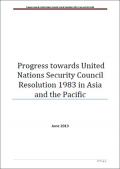
Resource | Publications,
The United Nations Security Council (UNSC) Resolution 1983 was adopted in June 2011 just before the United Nations (UN) General Assembly High Level Meeting (HLM) agreed the Political Declaration: Intensifying Our Efforts To Eliminate HI and AIDS including ten global targets to achieve by 2015 ("HLM targets").
Together, the HLM targets and UNSC Resolution 1983 provide an opportunity to scale up universal access to HIV and AIDS related services for all uniformed service personnel and their family members and for people living with HIV and the key populations at higher risk of HIV with whom uniformed services personnel interact. In Asia and the Pacific, key populations include sex workers, men who have sex with men, people who inject drugs, transgender people, migrants and mobile populations, prisoners, internally and externally displaced people due to humanitarian situations and those at risk of sexual violence.
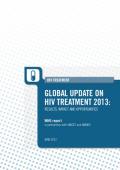
Resource | Publications,
This publication reports on the progress being made in the global scale-up in the use of antiretroviral (ARV) medicines in low- and middle-income countries, the challenges that are being overcome or that await solutions and the opportunities for building on the achievements of the past decade.
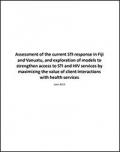
Resource | Publications,
Sexually transmitted infections (STIs) are present at high levels in the Pacific, with many countries having Chlamydia rates of >20% among antenatal clinic (ANC) clients. The current assessment examined the STI interventions implemented in Fiji and Vanuatu.
Both Fiji and Vanuatu would benefit from the increased use of STI (not just HIV) messages in their health communication and HIV prevention efforts. There is also a need to strengthen targeted interventions for HIV and STIs among the key populations at higher risk (KPHR) such as better linkages between civil society peer and outreach and government services, addressing laws that impede access by HPHR and strengthen condom programming. Fiji in particular could make greater use of its NGOs to strengthen targeted interventions for HIV and STIs among key populations at higher risk. Finally, the STI response should be monitored more intensively, including efforts to quantitate the success of partner treatment and syphilis screening efforts.

Resource | Publications,
The United Nations Global Compact, as the world’s largest corporate sustainability initiative, was asked to assess and report on the views of business leaders on global sustainability priorities, and specifically how business can contribute to advancing and achieving these goals in a post-2015 context.
Following a globe-spanning series of consultations, surveys and focused discussions held over the past year with thousands of companies and investors, it is clear that businesses committed to responsibility and sustainability are energized by the prospect of a newly articulated set of world priorities – which include clear goals and targets – and by the interest shown by the United Nations Member States and the United Nations Secretary-General in incorporating the view points and capabilities of the private sector. The United Nations post-2015 agenda presents the opportunity to shift to a new paradigm in development thinking by fully recognizing the central role of business.
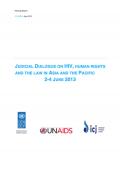
Resource | Laws and Policies,
The Judicial Dialogue provided a critical opportunity for experience sharing between members of the judiciary and representatives of judicial training institutions from 16 countries across Asia and the Pacific, on the complex legal and human rights issues raised by the HIV epidemic. The Judicial Dialogue also benefited from the perspectives of people living with HIV, representatives of communities of men who have sex with men, transgender people, sex workers and people who use drugs.
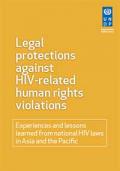
Resource | Publications,
The UN Political Declaration on HIV/AIDS (2011) reaffirmed that the full realization of human rights and fundamental freedoms for all is an essential element in the global response to HIV. The enactment of laws to protect the human rights of PLHIV and key populations at higher risk of HIV is essential to creating an enabling environment for effective HIV responses. The UN Economic and Social Commission for Asia Pacific (ESCAP) Resolution 66-10 (2010) calls on member states to ground universal access to HIV services in human rights and to address legal barriers to HIV responses, and ESCAP Resolution 67-9 (2011) commits states to initiate reviews of national laws, policies and practices to enable the full achievement of universal access targets with a view to eliminating all forms of discrimination against PLHIV and key affected populations.
This study is intended to inform the efforts of governments and civil society to strengthen the enabling legal environment for HIV responses. The focus is both on the content of protective laws and issues that arise in effective implementation of protective laws. Ensuring protective legislation is in place is insufficient – attention must also be paid to how the law is implemented and enforced.
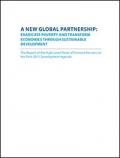
Resource | Publications,
The Panel came together with a sense of optimism and a deep respect for the Millennium Development Goals (MDGs). The 13 years since the millennium have seen the fastest reduction in poverty in human history: there are half a billion fewer people living below an international poverty line of $1.25 a day. Child death rates have fallen by more than 30%, with about three million children’s lives saved each year compared to 2000. Deaths from malaria have fallen by one quarter. This unprecedented progress has been driven by a combination of economic growth, better policies, and the global commitment to the MDGs, which set out an inspirational rallying cry for the whole world.
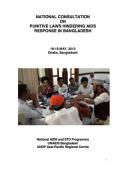
Resource | Laws and Policies,
The objectives of the workshop were to identify the laws hindering the AIDS response and build consensus on reforms needed to create an enabling legal environment for access to HIV services and to chalk out a time bound action plan identifying priorities for the amendment of punitive and discriminatory legal environment that are impeding AIDS responses.
The consultation was attended by 82 participants. The inaugural session, which was attended by eminent personalities, expressed the need for the timely intervention, while the overview of the HIV/AIDS epidemic in Bangladesh painted a vivid picture to the participants in understanding the gravity of the AIDS epidemic and limitations of the current response.
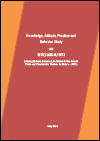
Resource | Publications,
This study has shown that there is a high level of general HIV Knowledge among three out of four populations studied. Use of Intravenous drugs appears to be very low, and this was observed for all population studied. Of particular interest is the results obtained as part of this study showing between 1-13% reported IDU users in a study carried out in 2009 which is different to that found in this study. Whether that is truly the case or not will be evident in future studies and possible youth focused KABP studies.






